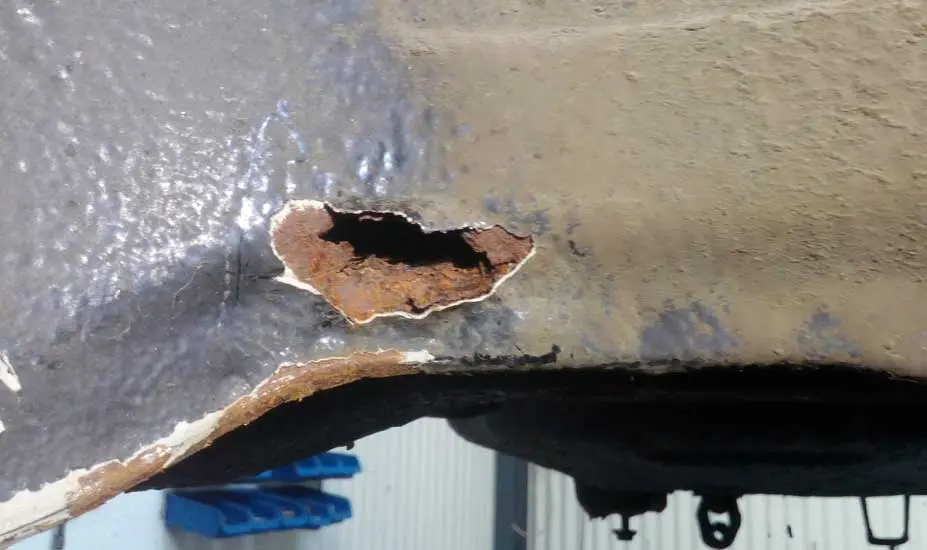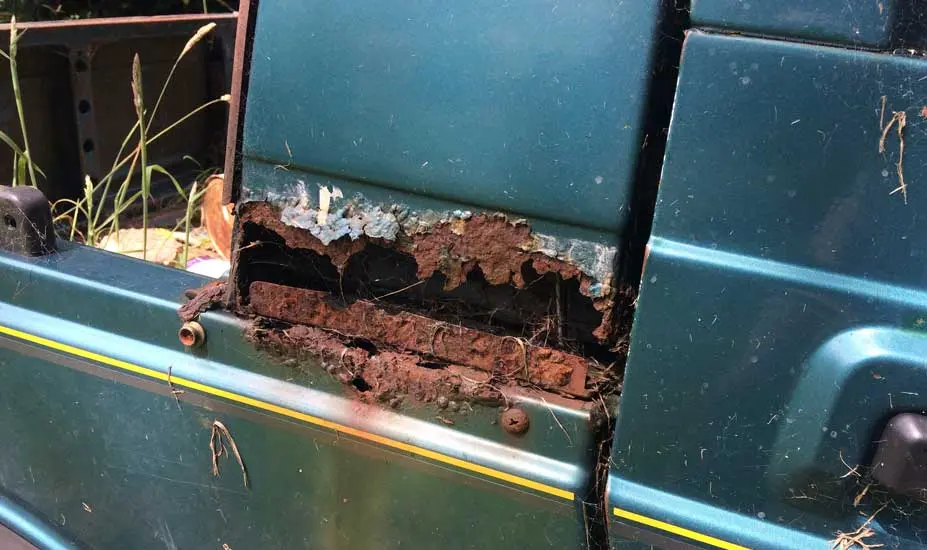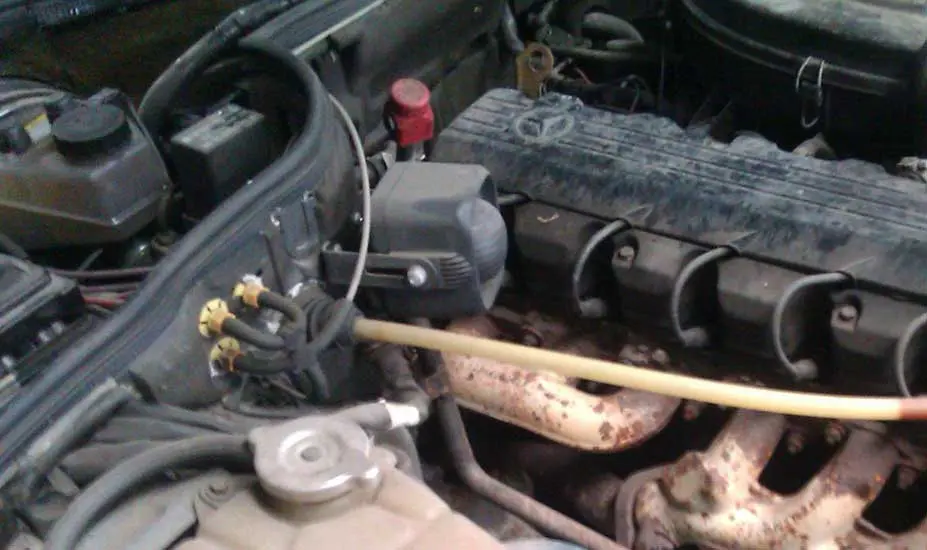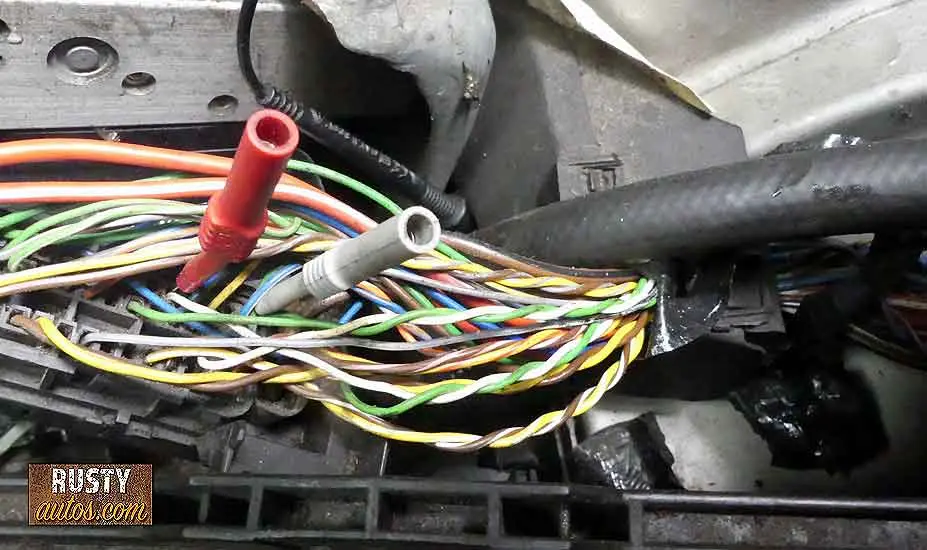Old cars are cool, but an old car broken down by the side of the highway ain’t. I’m a mechanic, and I’ve driven old cars most of my life. I’ll show you how to check if an old car is worth spending money on and I’ll show you the car’s that you should avoid.
An old car is likely worth repairing so long as it’s rust-free, has a good maintenance record, engine/transmission is strong, and all electrics are working. As a guide, repair costs shouldn’t exceed one-third of the car’s current value.
In this post, I’ll show how to do a quick calculation that will indicate if your old car is worth keeping. I’ll also show you how to check over your car in a little more detail.
Cars Value

Changing your car is a major decision, and if the old car has some life, why change it. I’m sentimental about cars, so for me, the decision is easy. But I do understand, no point in spending a packet fixing up an old car only to find something expensive like the tranny fails the next week.
A friend of mine said to me recently in a throwaway type remark, “older cars break down a lot,” that made me think. I’ve been a mechanic for twenty-plus years, and in my experience, that statement isn’t quite correct.
Badly maintained cars break down a lot. Many of them happen to be older cars, and that’s not surprising as a car’s value decreases, owners are less in love with them.
Older/modern (up to 20 years old) cars are very well engineered and are capable of giving great service. In my opinion, many cars are sent for scrap when their only crime is being old and not holding much monetary value.
That said, all older cars will need some love, and depending on how much love your car needs will dictate if it is indeed worth fixing up.
To make this determination, you’ll need an estimate for any works that need to be carried out and an unrepaired current market valuation of your vehicle.
Bring your car to a respected mechanic and get a full check over listing repairs needed and the cost, or check over your car yourself (see below). You have the advantage of knowing your car. You know what works and what doesn’t work.
Check out Kelley’s Blue Book car value guide, and they also have a useful guide for repair costs.
As a guide, the repair estimate should not exceed one-third of the current value of the car (unrepaired). This rough rule of thumb doesn’t work in all cases. Take for example a car with a blown engine, which likely will have very little value, but replace the motor and you have multiplied its value many times. Clearly, the one-third guide doesn’t work in this case.
But for most older cars that have many minor faults, the rule of thumb works fine. And that’s because, in the case of older car repairs, the sum of the repairs rarely adds any extra valve to the vehicle. Meaning you are spending a dollar to get a dollar back. And that’s the best-case scenario.
Example of a car not worth repairing
Your car’s current resale value without repairs = $5,000
Value after repairs = $6,000
Repair estimate = $2,000
Example of a car worth repairing
Your car’s current resale value without repairs = $5,000
Valve after repairs $6,000
Repair estimate = $1,000
A car that is corrosion-free has good solid mechanicals, a good service record, and electrics in great shape is a car worth keeping.

Body Corrosion
Sure, a rusty fender looks bad, but what do you expect? Old cars get rusty. Rust on the body can easily be fixed. Auto repair shops stock many easy-to-use corrosion DIY repair kits (no welding or metal fabrication). You can check out some of these products right here on the Rust repair tools page.
Fiberglass kits are a popular way to repair non-structural corrosion that will last years. Rust prevention, body sealer, underbody coating, and rust converters are fantastic products. I use them all the time.
Most good auto stores will match the color of your car in a rattle can. You can even paint your car and obtain a pretty good finish if you put the effort in.
However, it’s not the rust on the upper body that bothers me. It’s the corrosion in the places we can’t see. Generally speaking, if a car exhibits corrosion bad enough to cause holes in the body panels, like bottoms of doors or fenders.
Then there’s an excellent chance the hard-to-see places like the chassis are also affected by corrosion.
Chassis corrosion is a safety risk
A vehicle’s chassis is the backbone of the vehicle. It’s the main structure of the vehicle. All other components are attached directly or indirectly anchored to the chassis. Components like steering, brakes, suspension, and axles are critical to control and safety. These components rely on being anchored to a solid chassis structure.
A vehicle chassis is a carefully engineered structure with important crumple zones. The crumple zones are designed to absorb energy by folding the chassis structure at predetermined locations. This protects the occupants in the event of a collision. Corrosion in a strategic area of the chassis could cause the crumple zones to fail.
In my experience, finding chassis corrosion usually means the brake lines are also affected by corrosion. Your car’s brakes rely on steel brake lines to carry the brake fluid and fluid pressure to each wheel. When corrosion attacks the steel lines, the brakes could suddenly fail.
How To Check An Old Car For Corrosion

Hopefully, you have a solid car, free from corrosion. But there’s only one way to find out for sure, and that means getting a little dirty. You’ll need an inspection light, overalls, safety glasses, dust mask, and finally, a long flat screwdriver for poking and scraping.
A special brake line corrosion inspection tool makes the task easier. I’ve listed the one I use on the Brake repair tools page.
A workshop creeper makes moving around the car’s chassis easier but not essential. You won’t need to jack the car unless you’re driving a Corvette. No need to climb under the car. We’ll be able to see and reach plenty.
Here’s a list of the most common places corrosion starts, but every car has its corrosion hot spots. A quick google of your model will highlight them.
We’ll begin by checking the upper body and then check the chassis.
- Open car doors and check door bottoms
- Check trunk floor
- Trunk lid lip
- Check hood lip
- Check under hood cowl drains
- Check engine bay, especially around suspension towers and chassis rails
- Open sunroof and check drains (if applicable)
- Trapped muck, traps moisture and that leads to corrosion. Check around the bottom of fenders behind the plastic fender covers.
- Trunk floor
- Sills
- Jacking points
- Chassis rails underside
- Under front rail, below radiator
- Under car battery tray
Suppose the chassis checks out okay, great! Your car has passed the first of the four main checks. If, on the other hand, you found a few major areas of concern, time to consider buying a replacement vehicle.
Repairing chassis corrosion requires welding and may also require certification by a structural engineer depending on state laws. This can be expensive and likely isn’t worth the investment.
However, light corrosion can be treated with easy-to-use rust converter chemical products and under-body coating, both of which you can check out here on the Rust repair tools page.
Good Maintenance Record
Good maintenance is a cornerstone of reliability. If a vehicle has had a hard life or hasn’t had a ton of maintenance, it likely isn’t a great car to invest money in. Good maintenance ensures major components operate reliably and are durable.
Maintenance items like timing belt and water pump replacement, transmission flushes, coolant, brakes fluid are often skipped, especially as a vehicle ages. Skipped maintenance leads to major failures and large bills.
So check that maintenance record, or if you own the vehicle from new, you already know how well it’s been cared for.
In my experience, a car that’s garaged and kept clean inside and out is very often very well maintained also.
A car with a poor maintenance record is highly likely to be problematic and a drain on your pocket.
An old car that’s well maintained will have the following maintenance documented in the maintenance book:
- Engine oil and filter (once per year at least)
- Transmission flush and oil change
- Differential oil replaced (rear drive and 4×4)
- Transfer case oil replaced (4×4)
- U joints greased (4×4)
- Coolant flush and change (every three years)
- Replaced thermostat
- Brake fluid flush (every four years)
- Air conditioner oil and gas replaced
- Power steering fluid change
- Tire rotation
- Annual alignment
- Wiper blades replaced
Strong Engine and Transmission

Modern cars’ mechanicals is pretty durable, major failure is rare, but some models have issues. Google your make and model for common problems. You’ll need to pass the results through a filter. Forums, by their nature, attract unhappy customers. Older VW’s, for example, had some major engine flaws, which are well documented.
Finding many complaints about engine or transmission failures after x miles or x years old is useful information. It could help you make an informed decision about investing money, time, and effort in an old car.
As said, while engine and transmission failure is rare, here’s a list of common old car component failures.
- Battery
- Brake calipers
- Mufflers
- Coils
- Fuel pumps
- Gas caps
- EVAP canisters
- Turbocharger
- EGR valve
- Exhaust catalysts
- O2 sensors
- MAF sensor
- Throttle body’s
- Alternators
- Air Conditioning pumps
- Radiators
- Thermostats
Electrics In Working Order

Electrics are notoriously expensive to repair. The reason is simple, modern cars are complex. They use a ton of computers (modules) that communicate over a network (CAN – Controller Area Network), not unlike an office computer network.
As a car gets older, the wiring between these modules often becomes damaged, chafing off metal bodywork, connections become loose or corroded. Wiring issues cause high resistance, and since modules use resistance to communicate, messages quickly become lost.
The system is, as you likely know, smart enough to flag a fault. The technician uses a fault code reader, and that does help hugely with fault finding. However, finding the point of failure will often require stripping many components to gain access and make the repair. Time-consuming work and that adds up to a sizable bill.
Module failure is common as vehicles get older. Water leaks, vibration, and fatigue are the usual cause. Replacing a module is an expensive business. Second-hand modules usually can’t be used as modules are coded to the vehicle.
All older cars will have some electrical issues. If your vehicle has a ton of electrical issues, then consider passing on getting them repaired. As said, electrical issues can add up to hundreds of dollars to put right.
Electrical issues could affect something as simple as a power door mirror or something major like a restraint system or ABS.
Common electrical issues include:
- Air bag faults
- SRS restraint system fault
- Alarm systems
- ABS electrical faults
- PCM
- TCM
- HVAC
- Power windows
- Power sunroof
- Power seats
- Heated seats
- Radio
- Navigation system
- Rear heated window
- Heated door mirrors

Sum Up
If your old car is mostly rust-free, has a good service record, engine and transmission still pulls like a dog, and all the important electrical kit works, then yes, your old car is worth repairing.
I love older cars. I’ve been driving an old Mercedes for years. I take good care of her, she’s garaged, and her body is kept clean and waxed. The underpinnings are undercoated to ward off damaging road salts, and I don’t expect to retire her any time soon.
An old car can save you money, too, considering how quickly new cars lose their value. The average family car will have lost 40-50% of its value at just five years old. That’s, on average, about $3000 per year. A well-maintained car won’t cost $3000 every year to maintain. If you can take care of much of your own maintenance, you’ll save a packet.
Check out the Mechanics tools page for a list of my favorite tools.
- About the Author
- Latest Posts
John Cunningham is an Automotive Technician and writer on Rustyautos.com. He’s been a mechanic for over twenty-five years and has worked for GM, Volvo, Volkswagen, Land Rover, and Jaguar dealerships.
John uses his know-how and experience to write fluff-free articles that help fellow gearheads with all aspects of vehicle ownership, including maintenance, repair, and troubleshooting.

